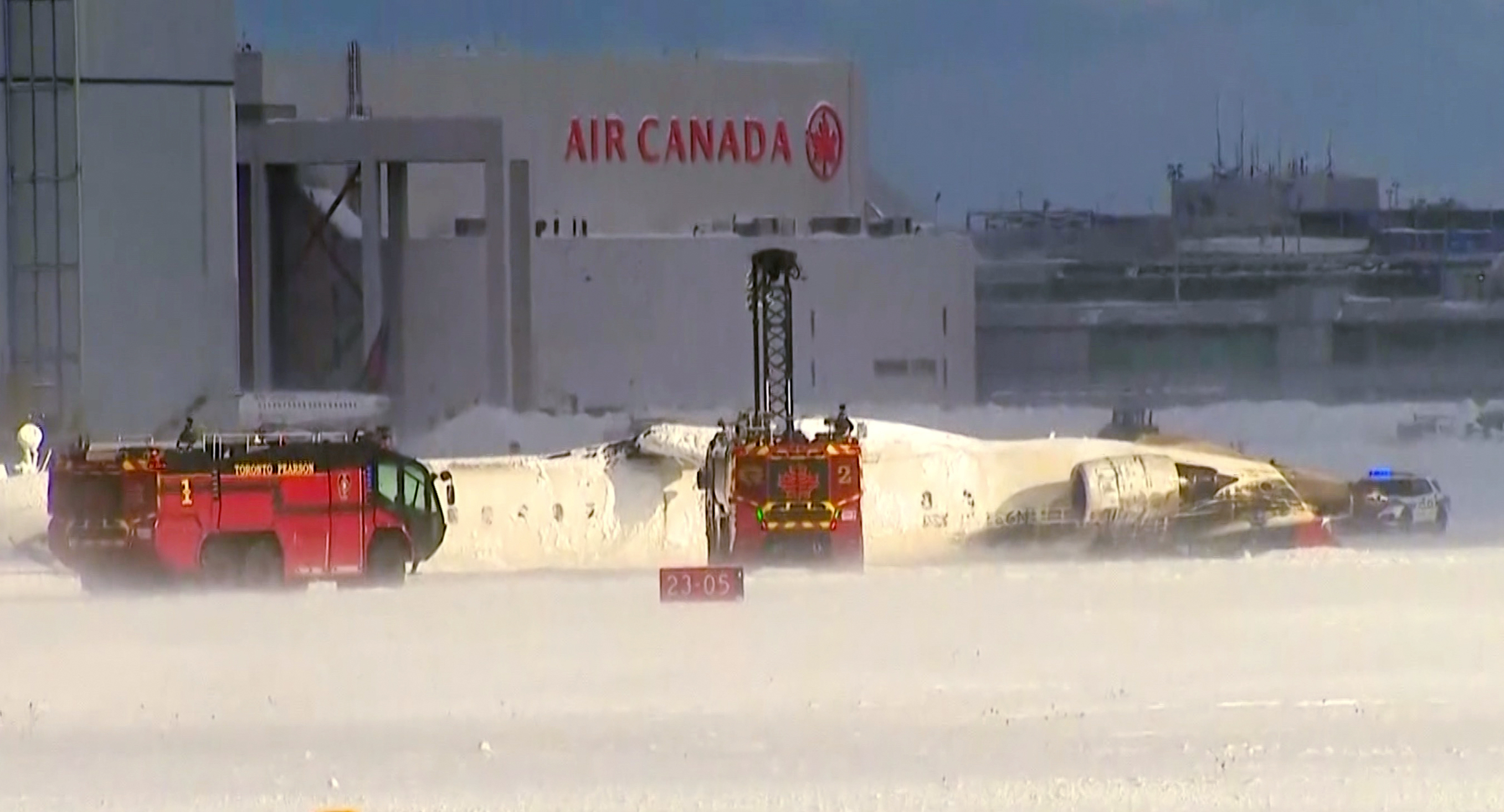The northern lights are forecast to grace the skies above the northern United States this weekend, as the Earth continues to be buffeted by a stream of solar wind.
The wind is billowing out of a hole in the sun's upper atmosphere—one so vast that it is expected it will take us a good two–three days to clear its path.
Tonight, the aurora may be visible across Alaska, and as far south as parts of Idaho, Maine, Michigan, Minnesota, Montana, North Dakota, South Dakota, Washington and Wisconsin.
The forecast for Saturday night is more modest—but there is still a chance, weather permitting, of catching the northern lights in parts of Michigan, Minnesota, Montana, North Dakota and Wisconsin.
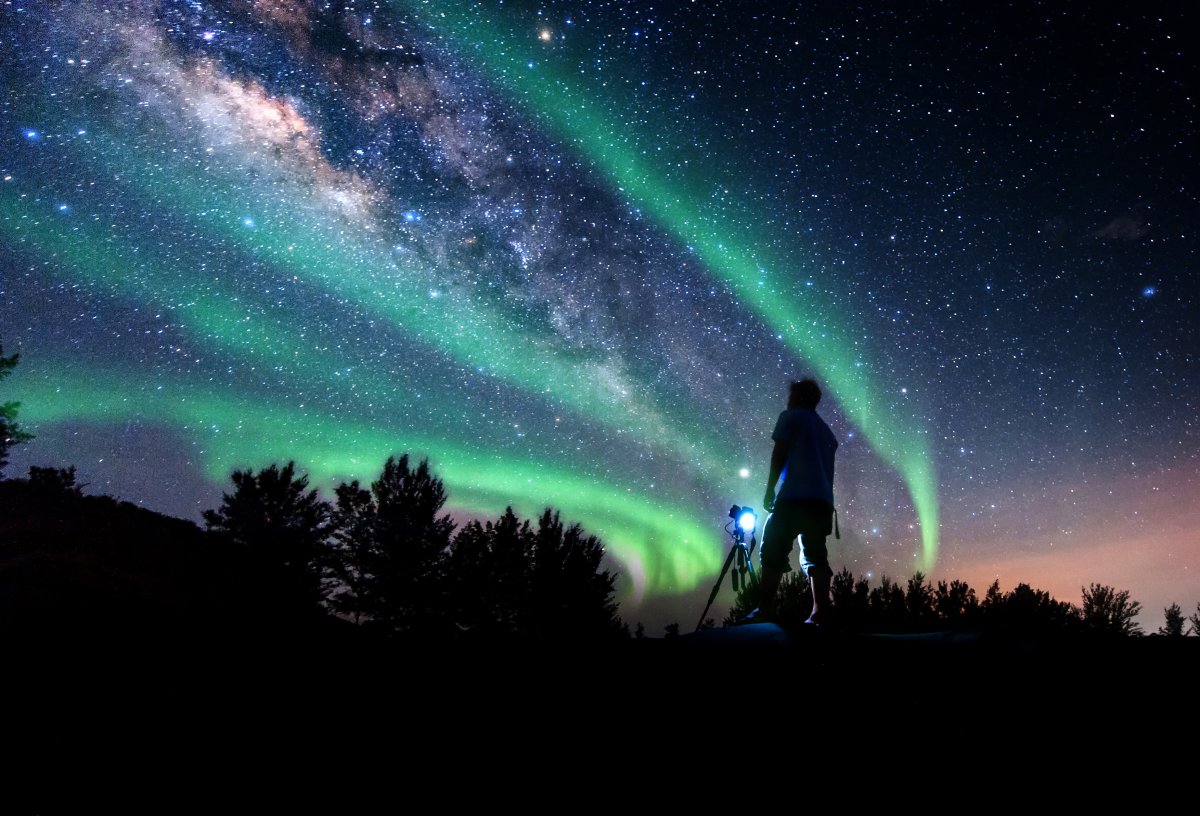
The northern lights form when solar wind particles excite atoms in the Earth's upper atmosphere, causing them to glow.
Aurorae appear as curtains of light that trace geomagnetic field lines and vary in color depending on the species of atom being excited.
As Earth's atmosphere is dominated by nitrogen and oxygen, the aurorae tend to give off a blue–pink–purple light (from the former) and a green hue (from the latter).
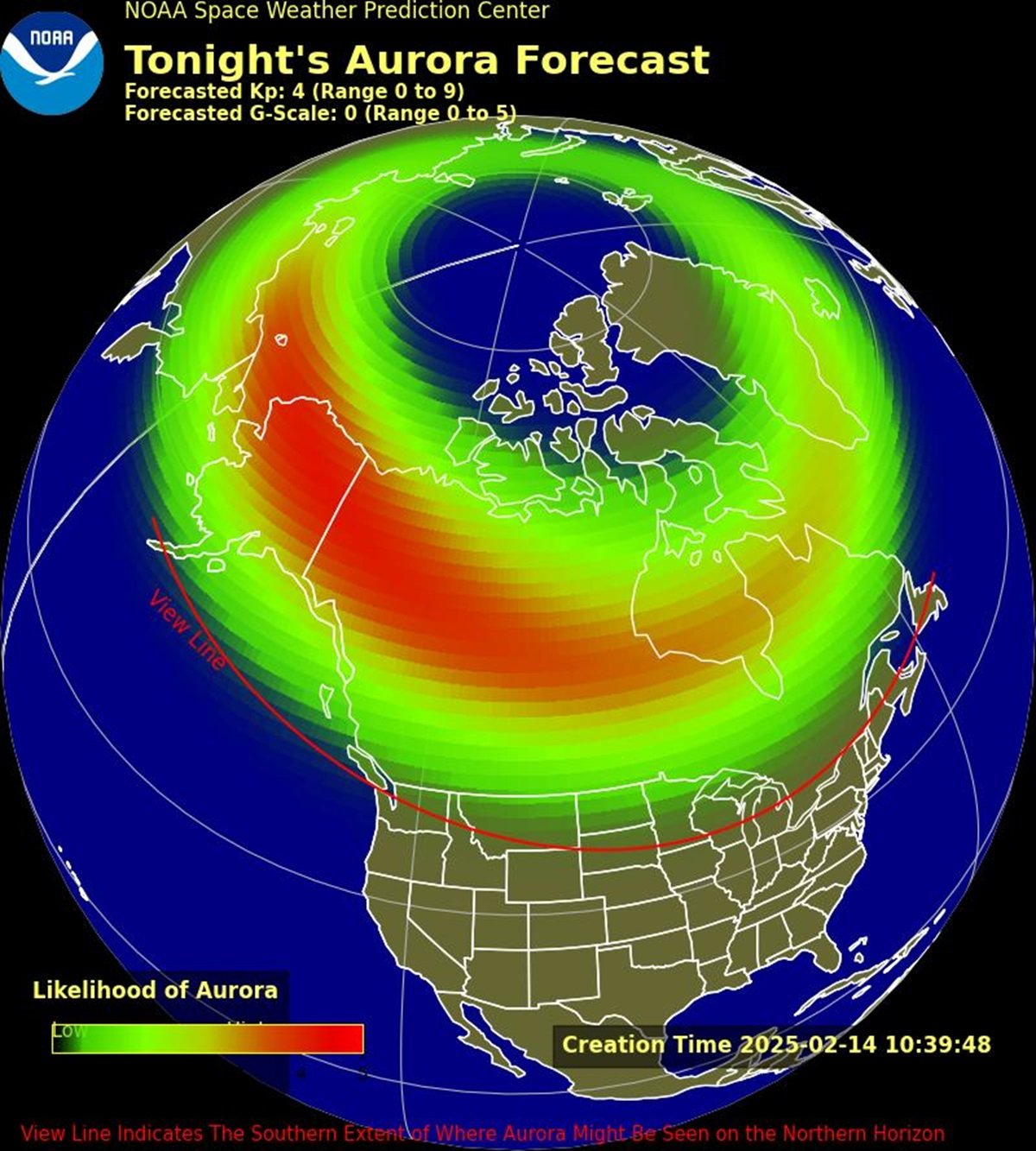
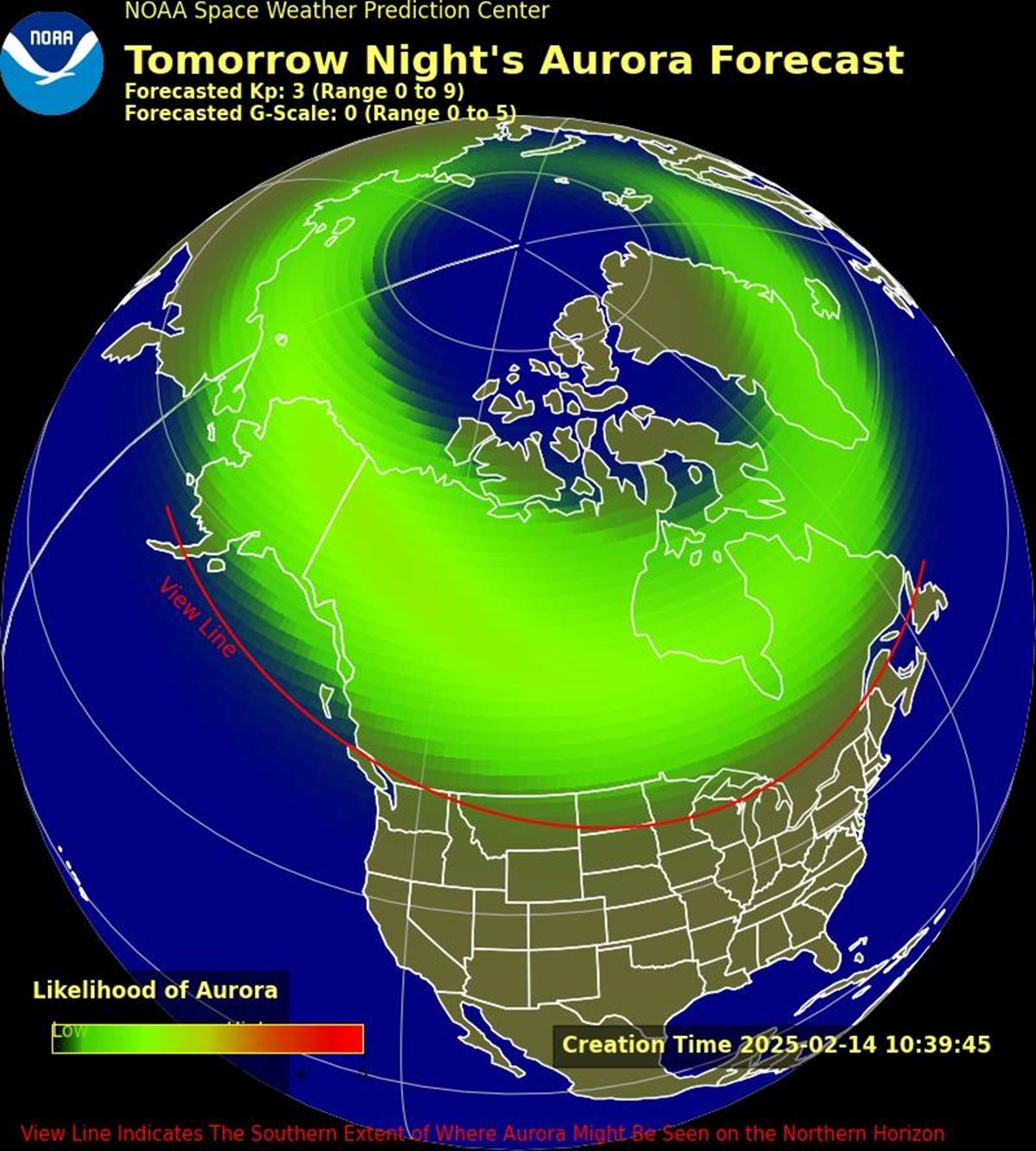
What Is a Coronal Hole?
Coronal holes form in the outermost layer of the sun when the local magnetic field opens up, allowing the solar wind to escape at a much faster rate than usual.
Because of this escaping material, coronal holes appear as cooler, dark patches when viewed in ultraviolet and soft X-ray images of the sun.
Coronal holes may superficially appear to be similar to sunspots, as both appear as dark blotches on our star.
In many ways, however, they are opposites of each other; sunspots form in the lowest layer of the solar atmosphere when the local magnetic fields grow strong and get twisted, rather than opening up into space, as with coronal holes.
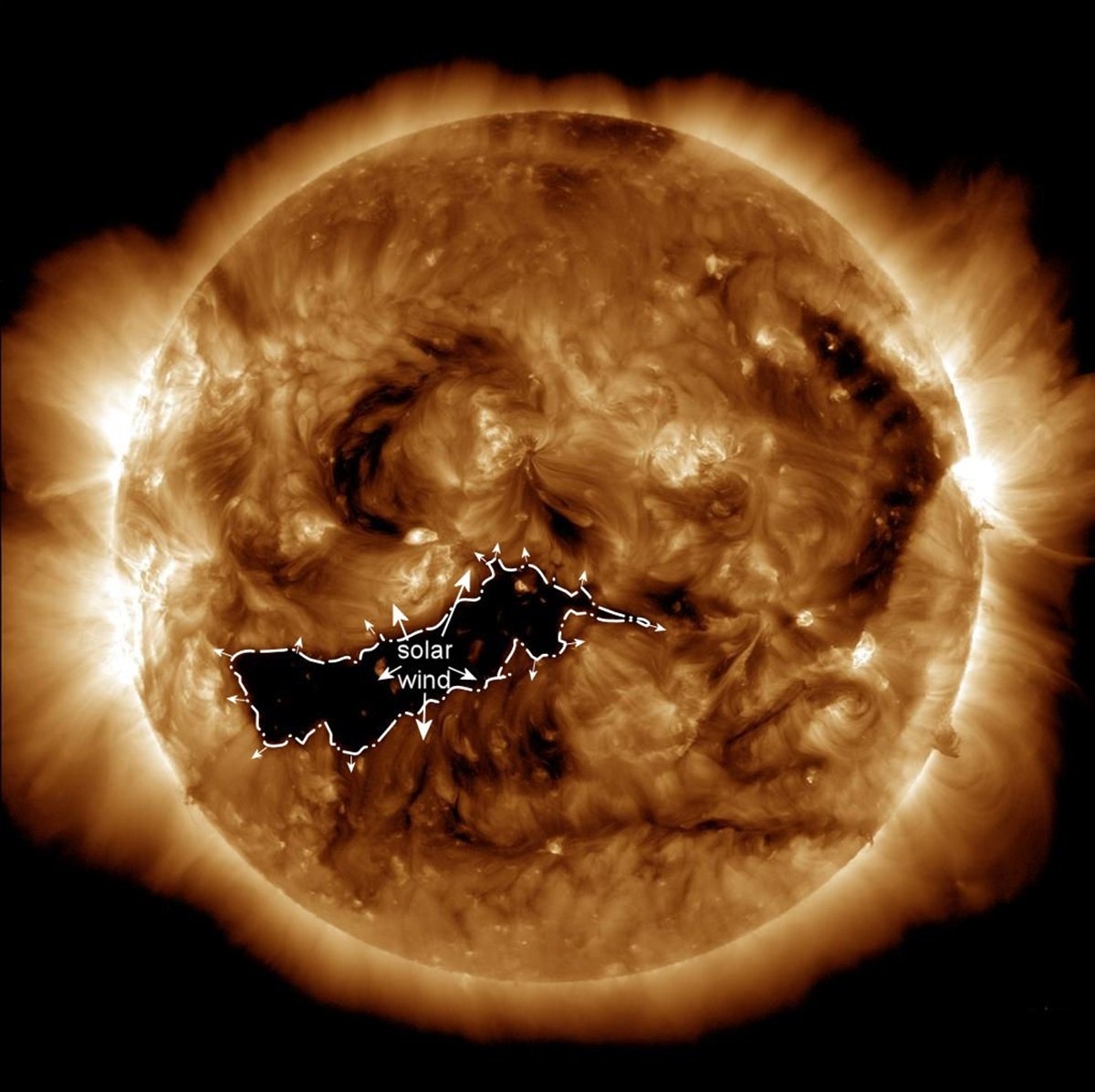
How To See the Aurora
To have the best chance of spotting the northern lights over this weekend—and, also, in general—the National Oceanic and Atmospheric Administration (NOAA) recommends looking skyward either just after sunset, or just before sunrise.
"The aurora does not need to be directly overhead but can be observed from as much as a 1,000 km [621 miles] away when the aurora is bright and if conditions are right," the agency explains on its website.
The northern lights are easiest to spot in clear weather and in places where the skies are darker—away from sources of light pollution like cities.
At this time of year, aurora-chasers are recommended to dress up warmly, in layers, to fend off the night chill.
Do you have a tip on a science story that Newsweek should be covering? Do you have a question about the northern lights? Let us know via science@newsweek.com.
fairness meter
About the writer
Ian Randall is Newsweek's Deputy Science Editor, based in Royston, U.K. His focus is reporting on science and health. He ... Read more

